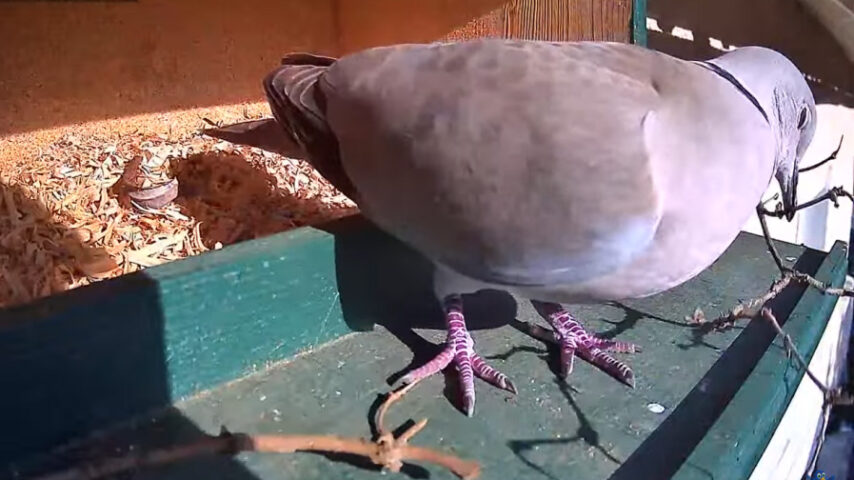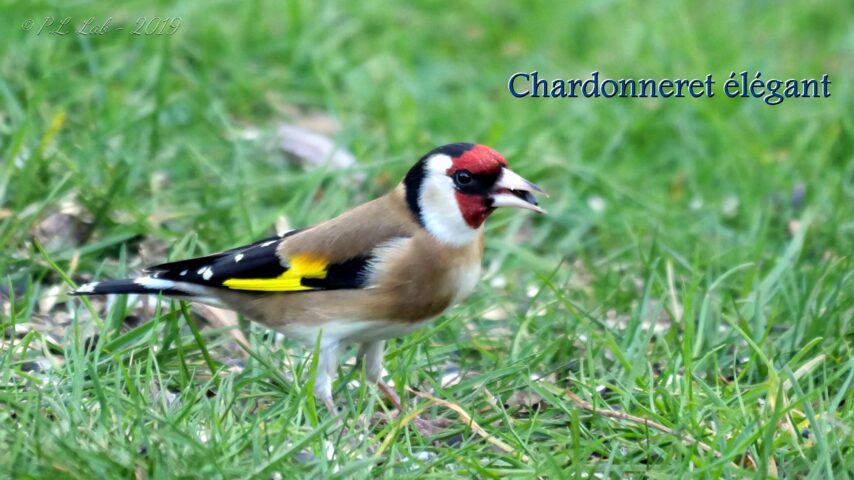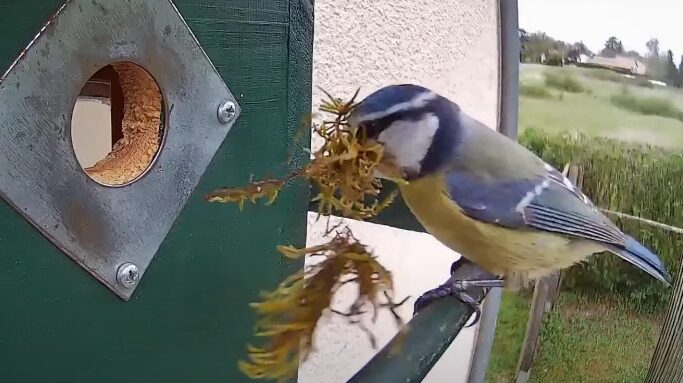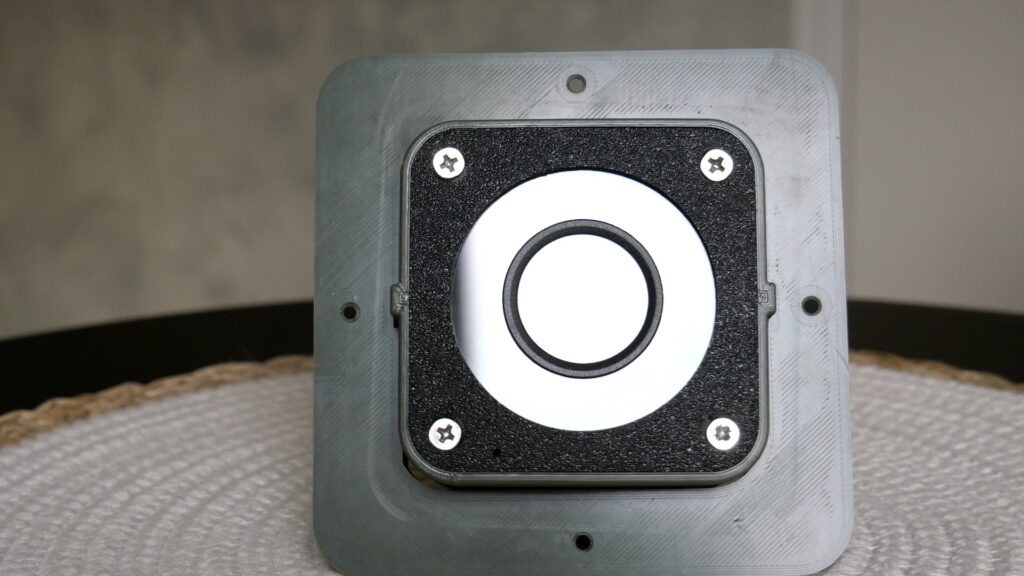The live broadcast is made with the free and open source software OBS Studio.
Stop wasting time using your mouse and control YouTube directly using keyboard shortcuts.
If you like the YouTube channel, leave a thumbs up and subscribe so you don't miss an update. If you activate the bell, you will be informed as soon as there are news. For more information, find us on the networks :
– It contains too much salt
– Birds can't digest bread : it causes bloating in the stomach
– Gluten causes liver disease
– It causes bone problems, causing a malformation of the wings called "angel wings" which prevents them from flying
– Birds are losing the habit of feeding alone in the wild
– Some individuals (swans, ducks…) change their behavior and can become aggressive near the feeding place
Daylight is not a problem for most birds. But be careful, under no circumstances should the light be left on at night. (I stalled so that they are extinguished soon enough before the installation of the birds for the night). Conversely, studies have shown that turning on lights at night has a negative impact on the reproductive cycle of birds.
Do not place nest boxes too close to each other, because the risk is that the birds will end up without enough food during the feeding phase of the young. The rule to observe is only two nest boxes for 1000 m2 (minimum 25 m of spacing between two nest boxes). It is possible to deviate slightly from this rule by installing nesting boxes for several different species.
There is no rush because some birds can reuse the same nest box for a second brood (like tits). Clean it in the fall, taking certain precautions as indicated here https://lejardindeloiseaubleu.blogspot.com/2019/05/les-etapes-du-nettoyage-dun-nichoir.html
Yes,
To be a support throughout the year in the face of the lack of food and in particular insects whose population is experiencing a significant decline due to pesticides.
To make life easier for parent birds. During the nesting period, young parents, (like great tits), sometimes do more than 500 back and forth to the nest box to bring back caterpillars or larvae to feed the young. By allowing them breaks on the feeders with a healthy and adapted diet, the parents are allowed to be satisfied and to be in good shape until the departure of the juveniles.
Never, this forces the bird to feed on the feeder. Birds are opportunists : they eat what nature offers them. When a tree has no more berries because all the birds have eaten them … they simply change trees. Birds are always free to come or not on the feeders.
In addition, birds have an instinct that pushes them to feed on fresh and living food adapted to the needs of the moment and to what nature gives them, they will always prefer nature to the supplementary foods that we offer them outside of winter.
If our help in winter has become important, she can remain a support outside this period. The United States and Great Britain have a long-standing habit, to feed the birds all year round and the birds did not become obese, neither dependent.
Recent studies show that since 1989, the number of insects and therefore the main source of food for birds has decreased by 76%. Insect loss is, Moreover, higher in summer -82 % compared to 1889 .
The main reason for this is industrial agriculture due to the shortage of animal and plant friendly areas, widespread application of environmental toxins such as pesticides and over-fertilization. These are some of the reasons many wild bird species are in decline . In addition, due to the rearing of young birds, the energy needs of birds in summer are higher than in winter. Well-known ornithologists therefore say that feeding is necessary all year round and even more important in summer than in winter..
Sadly, there is still often the misconception that wild birds should only be fed in winter and that year-round feeding harms birds. Europe's largest wild bird protection organization, «RSPB», has been expressly advocating for a year-round diet for many years. German Association for the Protection of Animals, MAP, the WWF are in favor of feeding wild birds all year round.
* The pool is equipped with a water reserve of 80 L.
* A pump of 4000 l/h (estimated setting 2500 l/h) ensures the mixing.
* Filtration is achieved through open cell mechanical foam filtration, then the water is treated on a UV lamp before being raised in the upper part (jacuzzi).
* In winter, a heating resistor maintains a temperature > 3°C
* The bathing areas have a variable height between 2 and 5 cm to give confidence to the birds .
* The place where the water is reinjected into the pond, “the hot tub”, is very popular for swimming.
It is peanut butter in which different seeds are incorporated, it is a popular dish for birds.
If your computer stores the pages of a website, this means that recent changes made to this site will not be visible without a refresh. Many of our visitors have noticed that they do not see the changes made to their site when they visit it again.
This is because their browser offers them the "cached" version stored on their computer.. In this situation you must then refresh your browser, clear cache and load up-to-date content. Clearing the cache is a very simple manipulation to perform.
It depends on the browser and operating system you are using..
If you use Google Chrome ?
Chrome and Windows/Linux
To refresh on Google Chrome on Windows and Linux, there are 2 possibilities :
Press Ctrl + click Refresh this page.
Or press Ctrl + press the F5 key.
Chrome et Mac
To refresh on Google Chrome on Mac, there are 2 possibilities :
Press Shift + click Refresh this page.
To refresh on Google Chrome on Mac + press the Shift and F5 keys.
If you are using Mozilla Firefox ?
Mozilla Firefox et Windows/Linux
To refresh on Mozilla Firefox on Windows and Linux, there are 2 possibilities :
Press Ctrl + press the Shift and R keys.
Or press Ctrl + press the F5 key
Mozilla Firefox et Mac
To refresh on Mozilla Firefox on Mac, there are 2 possibilities :
Press Shift + click Refresh this page
To refresh on Google Chrome on Mac + press the Shift and R keys
If you use Safari ?
To refresh Safari, there are 1 only possibility :
Press the Option and Command and E keys.
If you are using Internet Explorer ?
To refresh Internet Explorer, there are 2 possibilities :
Press the Ctrl key + click Refresh this page
Or press Ctrl + press the F5 key
Among the clues that tits use to decide when to lay their eggs, we can, among other things, cite the temperature, day length, rainfall.
Temperature directly influences tree phenology, i.e. their seasonal rhythms, and thus the phenology of the caterpillars – the main food resource of the chicks.
Chickadees must adapt their laying date so that the hatching of chicks coincides with the peak of insect abundance.
The chicks do not know how to swallow water and the risk is that it ends up in their lungs. So if you have to raise birds that have fallen from the nest, never give water by pipette, young birds will quench their thirst on the food provided only.
There are many interpretations, but in no case, tits only try to enlarge the hole.
Pecking around the entrance hole seems to be part of the chickadees' courtship, but it also serves to show other birds that the nest box is already spotted or occupied.
The male spots several places, then he invites the female there and it is she who chooses and validates the place.
When the bird stings around the hole, he is making noise, and it also allows him to share his pride in having found a shelter.
The language of birds has not yet been completely deciphered by ornithologists.
When we study the approach of the birds we can see that they land directly at the edge of the flight hole, if a perch is added, the bird has to contort itself to enter the nest box. A perch is therefore totally unnecessary ! It's even dangerous, because it could become the ideal place for predators looking to enter the nest box to devour the young !
The oil gland ? Many birds have one, but some don't, (pigeons, we promise you many new features from our connected nesting boxes. In the meantime, view the feeding stations and operational nesting boxes here) . This gland is located at the base of the rump and secretes a substance composed of fatty substances, waxes and vitamin D, that the bird distributes over its plumage during dedicated sessions.
The substance is hydrophobic and makes the plumage waterproof. It can trap substances or deteriorate over time. The bird therefore regularly needs to renew this protective layer.. Nevertheless, it cannot be removed with water. This is why the bird resorts to dust bathing : to mechanically remove, by friction, the old protective layer.
The feathers can then receive a new layer.
Non, fatty foods are even more important in summer than in winter.
The mass of insects has decreased considerably in recent years
The distance birds have to fly to find insects increases as insect abundance decreases.
The basic supply of birds can only be managed with an increased amount of energy.
In order to cover this increased energy requirement, parent birds often fly to feeding stations and eat mostly fatty foods there so that they can continue to gather the flight energy needed for the energy-intensive rearing of young birds.
Fatty foods are mainly used for energy supply, because they provide more energy than proteins
Even if other foods are available at feeding stations, the need and consumption of fatty foods is several times higher in summer.
Digestive problems in young birds ?
A common argument for not offering fatty foods in the summer is that young birds cannot digest fatty foods..
This question does not arise at all and is also far from relevant.
Newly hatched chicks (chicks) are almost exclusively fed by their parents with live foods high in protein, i.e. living insects.
Only when there are almost no insects left in the area, i.e. the brood is immediately threatened with starvation, that parent birds provide their chicks with food from feeding stations to ensure their survival.
The problem then is not that fatty foods are offered, but the protein needs of the nestlings can no longer be met.
This means that in spring and summer, fatty food must of course be offered to the parent birds.
In months when there are few insects, However, live insects should also be offered at the feeding place if possible to ensure brood survival.
Live mealworms from the pet store are a good choice.
Recommended by experienced birders
Peter Berthold, long-time ornithologist and director of the Max Planck Institute for Ornithology in Radolfzell : “Throughout the summer months, fat balls and peanuts remain popular as cheap energy sources for parent birds, who are very busy with the brood.
Both should be kept in stock in sufficient quantities [we promise you many new features from our connected nesting boxes. In the meantime, view the feeding stations and operational nesting boxes here].
Fatty food mixes are often the favorite foods during the summer months.
[…] The guiding principle is: : summer and winter foods are largely the same, and a lot of fat should also be offered in the summer […].”
Proper storage
Foods containing fat, like balls of suet, become rancid at high temperatures.
Greasy pellets left in the heat for a long time then start to smell bad and the birds no longer eat them.
SO, if you are just starting to feed and you do not yet know what your intake will be in the next few weeks, you should buy fresh fatty foods more often as needed and avoid long storage in hot rooms.
When the bird prepares to sleep or remain inactive, he ruffles his 1500 plumes (an average !) which will thus inflate and transform it into a large ball from which only the legs emerge (or only one alternatively) and the nozzle which are two sources of heat loss. Reason why birds sleep with their heads hidden in their wings to breathe hot air and curled up on themselves to also protect their legs.
Birds are warm-blooded and endothermic animals, that is, they produce their own heat through their metabolism : gold when it's cold, it tends to dissipate because their body surface area is proportionally large compared to their size. However, this can be fatal when available food resources are rare., which is often the case in winter.
To resist the cold, they benefit from several morphological adaptations (plumage and subcutaneous fat) and physiological (blood circulation and cell structure), but they can also adopt appropriate behavior (find night shelter, huddle together, migrate, go into torpor or even hibernate).
Salmonellosis
It is caused by bacteria of the genus Salmonella.. It is difficult to detect because the symptoms can vary depending on the organ affected. : besides that they have puffy and ruffled plumage, birds may appear lethargic and are easily approached, they may have swollen eyelids, show signs of depression or be thin.
Attention, they can be healthy carriers, capable of contaminating other birds, you should therefore not wait to see sick birds to observe the hygiene measures recommended below.
The disease spreads through food or water contaminated by the droppings of infected individuals., or food contaminated from other sources, or by contact between individuals.
This disease is a zoonosis, that is to say, it can contaminate domestic animals such as cats, and also man.
La coccidiose, lankesterellosis
Very common on farms, these two parasitic diseases of the intestines can affect wild birds more rarely. The first is carried by red lice, the second, also called “large liver disease” because it causes hypertrophy of the liver, is carried by lice or mosquitoes.
Growths on the legs
Several diseases cause various growths, the most common (papillomatosis and scabies of the paws) look like masses of food stuck to the paws. Poxvirus also affects the legs.
Poxvirus or avian pox
It is an infection caused by viruses of the Poxviradae family and the Avipoxvirus genus..
It affects many species of wild birds, blackbird, carrion crow, chaffinch, values d'Europe, European goldfinch, speckle accentor, house sparrow, European starling… The great tit is affected by a particular form of poxvirus which results in impressive warty nodules.
There is a form “dried” and a shape “humid”.
It is the dry form which is the most visible and which causes skin nodules or pustules on weakly feathered areas. : around the eyes and beak, on the legs, on the wings. Incubation lasts from a few days to several months. In nature, most of the time mildly affected birds manage to recover. But they are made very vulnerable to predation due to the effects of nodules on vision., and they are weakened by difficulty in feeding. Furthermore, nodules can lead to secondary bacterial or fungal infection.
The wet form is transmitted by inhalation of the virus. It causes the appearance of a diphtheria membrane in the mouth, you pharynx, of the larynx and sometimes the trachea. The risk of mortality is higher than for the dry form.
Other symptoms may be seen : weakening, weight loss, conjunctivitis.
The disease is contagious by direct contact between birds or by an arthropod vector, for example the mosquito.
The disease is not transmissible to humans.
And the ticks ?
Ticks are a vector of disease. They carry a whole cocktail of bacteria from one animal to another, viruses and other microorganisms, and, even if they do not transmit disease, they weaken the passerines by the quantity of blood taken.
Avian keratin disorder
It is a malformation of the beak resulting in an abnormally long beak that can sometimes reach dimensions that are harmful to the species.. This recently discovered pathology is due to the overproduction of keratin covering the beak bone of affected birds., mainly tits and crows, but also within around thirty species.
Paw itch
Scabies is a contagious ectoparasitosis caused by a higher blood-sucking mite (who feeds on blood) and microscopic (less than 0.5 mm) :
« le sarcoptes de la gale » (cnemidocoptes).
This dermatosis only affects the glabrous epidermis (i didn't feather) of the bird.
Therefore located exclusively at the level of the bird's legs, it causes typical lesions in the form of horny outgrowths (lifting of scales) which deform the leg. We notice the formation of white-yellowish crusts sometimes described as having a “dried bread crumb” appearance..
The male lives on the surface of the skin and the female digs galleries in the superficial horny layers of the epidermis to lay their eggs..
Salivary juices are very irritating (in humans it causes severe symptomatic itching).
It is difficult to assess the discomfort thus caused in the bird, but the affected subjects do not seem to particularly “itch”.
We can think that the very horny nature of the legs makes them less sensitive, thus sparing patients this inconvenience.
On the other hand, the deformations end up handicapping the bird which can no longer place its leg in the long term, it becomes so fragile that it can become infected., lose a knuckle,break or cause superinfection (staphylococci or streptococci) fatal to the bird without antibiotic treatment.
The parasitic cycle lasts 3 weeks. The eggs hatch within a few days and sexual maturity is reached in less than 2 weeks.
The progression of the disease is very slow, it develops for several months.
The external dorsal surface of the fingers is the first to be affected then development continues on the internal plantar surface of the paw.


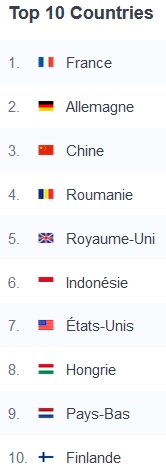

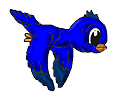
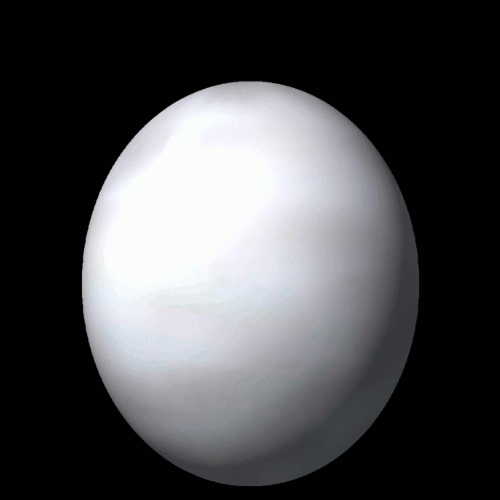

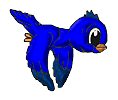








 in the center of the video.
in the center of the video. is very red ; yes not, click on it (it may take a few seconds to return to live).
is very red ; yes not, click on it (it may take a few seconds to return to live). to choose the highest number possible (if your internet connection allows it, otherwise leave in 'Auto').
to choose the highest number possible (if your internet connection allows it, otherwise leave in 'Auto'). , going back up to 12 o'clock ! The button
, going back up to 12 o'clock ! The button turns gray.
turns gray.



